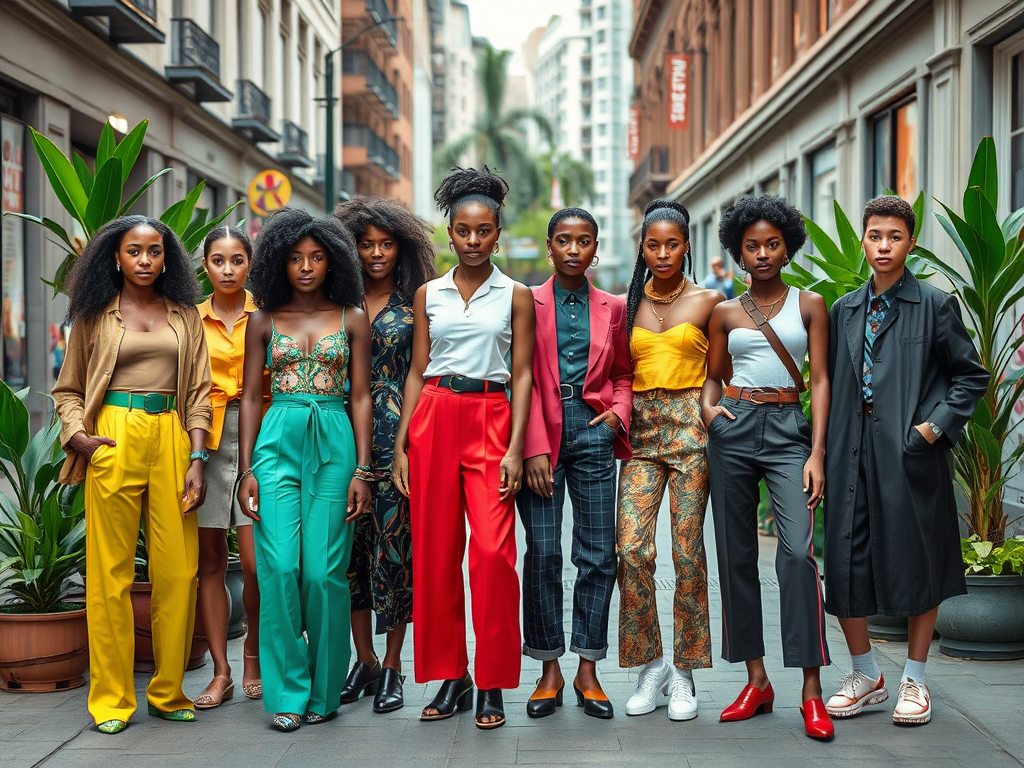What Makes a Fashion Brand Sustainable? A Look at the Criteria

In a world increasingly concerned with environmental and social welfare, the fashion industry is under scrutiny like never before. With concerns about climate change, pollution, and worker exploitation becoming more prevalent, the need for sustainable practices in fashion is paramount. Exploring the elements that make a fashion brand sustainable not only informs consumers but also drives brands to improve their practices. This article will delve into the crucial criteria that define sustainable fashion brands, examining their environmental impact, ethical labor practices, social responsibility, technological innovations, and the importance of consumer awareness. Ultimately, understanding these factors enables consumers to make more informed purchasing decisions, fostering a more responsible fashion ecosystem.
Sustainability in fashion goes beyond just the products themselves. It encompasses a broader framework involving environmental conservation, social equity, and economic viability. As consumers grow more discerning, the demand for transparency intensifies. By shedding light on the standards and practices that characterize sustainable fashion brands, we empower shoppers to support brands that align with their values. With so many options available, knowing what to look for can make all the difference in promoting a more sustainable industry.
Environmental Impact

Environmental considerations are at the forefront of sustainable fashion. The industry’s contribution to pollution, waste, and resource depletion has become a pressing concern. Fashion brands must evaluate their entire supply chain, from raw material sourcing to manufacturing processes, to minimize their environmental footprint. One significant aspect of this is the materials used in clothing production. Sustainable brands typically prioritize organic, recycled, and naturally derived fibers that reduce their environmental impact.
Here are some materials that are commonly regarded as sustainable:
- Organic Cotton
- Bamboo
- Hemp
- Tencel
- Recycled Polyester
Beyond just materials, sustainable production processes play a vital role in reducing environmental harm. Brands need to adopt energy-efficient manufacturing practices that lower greenhouse gas emissions. They should also focus on minimizing water usage and mitigating chemical waste during production. The need for responsible resource management in the fashion industry cannot be overstated.
| Criteria | Description |
|---|---|
| Materials | Use of organic, recycled, and sustainably sourced fabrics. |
| Production Process | Energy-efficient manufacturing with minimal waste. |
| Labor Practices | Fair wages and safe working conditions for all workers. |
| Community Engagement | Supporting local economies and social initiatives. |
Ethical Labor Practices

Ethical labor practices are another cornerstone of sustainable fashion. The issue of labor rights in the fashion industry has been a longstanding one, often marred by reports of underpayment and unsafe working conditions. Consumers are increasingly seeking assurance that the products they buy are made by workers who are treated with dignity and respect. Sustainable brands must prioritize fair wages for their workers, ensuring that they can live comfortably and support their families.
In conjunction with fair wages, safe working conditions are paramount. Brands should implement strict safety standards to create a healthy environment for their employees. Transparency within the supply chain also plays a crucial role; consumers should have access to information regarding where and how their products were made. This transparency fosters trust and allows consumers to make informed decisions.
Social Responsibility
Sustainable fashion extends into the realm of social responsibility as well. Brands have an opportunity to contribute positively to their communities and address social issues effectively. One way they can do this is through local sourcing. By sourcing materials and labor locally, fashion brands can support local economies and reduce their carbon footprint while encouraging job creation.
- Support for local artisans and craftspeople.
- Engagement in community social initiatives.
- Investment in educational programs for underprivileged sectors.
Additionally, engaging in charitable activities underscores a brand’s commitment to social responsibility. Whether it’s donating a portion of profits to environmental causes or sponsoring community events, these actions can significantly enhance a brand’s reputation. By aligning brand values with positive social impact, companies can cultivate a loyal customer base that resonates with their mission.
Innovation and Technological Advances
The role of innovation in promoting sustainability cannot be overlooked. Advances in technology are paving the way for more eco-friendly practices in the fashion industry. For instance, sustainable materials innovation has led to the development of new, eco-friendly fabrics. These materials reduce dependency on traditional resources while also providing functional and stylish options for consumers.
Waste reduction technologies are also playing a vital role in modern sustainable fashion practices. Brands are adopting production techniques that minimize waste through efficient cutting practices and recyclable products. The incorporation of circular economy principles—where products are designed for reuse and recycling—further supports sustainability in fashion.
Consumer Awareness and Education
Finally, consumer awareness and education form the backbone of sustainable fashion. It is essential for consumers to be informed about sustainability issues to make conscious purchasing decisions. Awareness encompasses understanding the environmental impact of fashion, recognizing ethical labor practices, and knowing how to spot sustainable brands. To assist consumers in this effort, brands often employ labeling and certifications that signify their commitment to sustainability.
- Global Organic Textile Standard (GOTS)
- Fair Trade Certified
- OEKO-TEX Standard 100
Encouraging responsible consumption is another critical aspect of consumer education. Shoppers should be guided on how to extend the life of their clothing through proper care, repairs, and recycling. By elevating consumer knowledge, we can shift the landscape of fashion toward a more sustainable future.
Conclusion
Understanding what makes a fashion brand sustainable is crucial in fostering responsible consumer behavior and encouraging brands to adopt more conscientious practices. From environmental impact and ethical labor practices to social responsibility and innovation, multiple criteria collectively define sustainability in fashion. Brands that prioritize these areas not only enhance their market position but also contribute positively to the environment and society. As consumers, we have the power to influence the fashion landscape by choosing to support brands that align with our values and promote sustainable practices. Together, we can cultivate a more responsible and ethical fashion industry.
Frequently Asked Questions
- What is sustainable fashion? Sustainable fashion refers to clothing that is designed, manufactured, and distributed in environmentally and socially responsible ways.
- Why is it important for brands to be sustainable? Sustainable brands help reduce environmental impact, promote ethical labor practices, and support social responsibility, making a positive contribution to society.
- What materials are considered sustainable in fashion? Sustainable materials include organic cotton, Tencel, bamboo, recycled polyester, and other fabrics that minimize harm to the environment.
- How can consumers identify sustainable fashion brands? Consumers can look for certifications, transparent supply chains, and brands that actively promote their sustainability efforts.
- Can fast fashion ever be sustainable? While traditional fast fashion has many issues, some brands are trying to implement sustainability practices. However, true sustainability often involves slower, more deliberate production methods.




